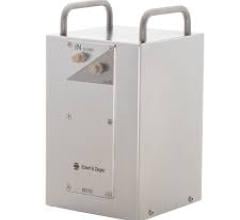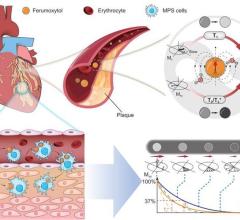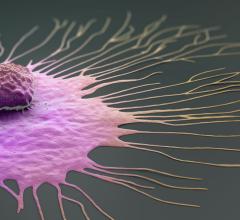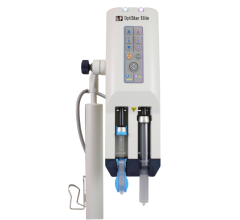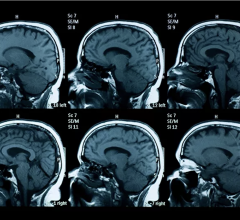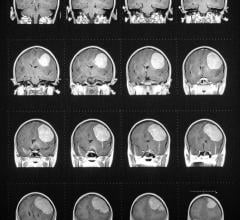July 8, 2008 – The FDA approved Bayer HealthCare Pharmaceuticals’s EOVIST (Gadoxetate Disodium) Injection, a gadolinium-based contrast agent, for intravenous use in T1-weighted magnetic resonance imaging (MRI) of the liver to detect and characterize lesions in adults with known or suspected focal liver disease.
The approval makes EOVIST the first organ-specific MRI contrast agent approved in the U.S. in more than a decade. EOVIST is a paramagnetic MRI contrast agent that combines features of both an extracellular contrast agent and a hepatocyte-specific agent. EOVIST is administered via an intravenous, bolus injection and has a dual route of excretion with approximately 50 percent eliminated through the liver and 50 percent eliminated through the kidney. Detection and characterization of malignant and benign focal liver lesions with EOVIST may help enhance diagnostic accuracy and increase diagnostic confidence.
“EOVIST-enhanced images can provide more comprehensive information about focal liver lesions in a single, short imaging session than was previously available,” said Jeffrey Brown, M.D., professor of radiology, Washington University School of Medicine, St. Louis. “With the availability of EOVIST, our ability to evaluate patients with benign and malignant focal hepatic lesions will be improved.”
Eight-hundred sixteen (816) patients with suspected or known focal liver lesions were enrolled in two of four non-randomized, intrapatient-controlled studies that evaluated predominantly the detection (Studies one and two) or morphological characterization (Studies three and four) of liver lesions. Studies one and two (“detection” studies) enrolled patients who were scheduled for liver surgery. MRI results were compared to a reference standard that consisted of surgical histopathology and the results from intra-operative ultrasound of the liver. The studies assessed the sensitivity of pre-contrast MRI and EOVIST-contrasted MRI for the detection of liver lesions when each set of images was compared to the reference.
Studies three and four (“characterization” studies) enrolled patients with known or suspected focal liver lesions, including patients who were not scheduled for liver surgery. MRI results were compared to a reference standard that consisted of surgical histopathology and other prospectively defined criteria. The studies assessed the correctness of liver lesion characterization by pre-contrast MRI and EOVIST-contrasted MRI when each set of images was compared to the reference. Lesions were characterized as one of the following choices: hepatocellular carcinoma, cholangiocarcinoma, metastasis, focal lymphoma, adenoma, focal nodular hyperplasia, hemangioma, abscess, focal liver fibrosis, regenerative nodule, focal fat, hydatid cyst, liver cyst, “not assessable,” normal, no lesion or “other.”
In all four studies, patients underwent a baseline, pre-contrast MRI followed by the administration of EOVIST at a dose of 0.025 mmol/kg body weight, with MRI performed immediately (the “dynamic” phase) and at 10 to 20 minutes following EOVIST administration (the “hepatocyte” phase). Patients also underwent computerized tomography with contrast examinations of the liver. Precontrast MRI and EOVIST-contrasted MR images were evaluated in a systematic, randomized, paired and unpaired fashion by three radiologists who were blinded to clinical information. Computed tomography (CT) images were also evaluated by the radiologists in a separate reading session.
EOVIST was generally well-tolerated during the trials. The safety database was based on EOVIST exposure in 1,755 adult subjects who received a dose that ranged from 0.003 to 0.5 mmol/kg body weight; the majority (N=1,365) received the recommended dose of 0.025 mmol/kg body weight.
Overall, 4.3 percent of subjects reported one or more drug-related adverse reactions during a follow-up period that, for most subjects, extended more than 24 hours after EOVIST administration. These adverse reactions were predominantly of mild to moderate severity. Serious adverse events were reported among six patients and were attributed to underlying conditions or non-MRI procedures. All serious events occurred more than 10 hours following EOVIST administration. The most common adverse reactions at the recommended dose were feeling hot, nausea, headache, injection site reaction (pain, burning, coldness, extravasation), dysgeusia (taste abnormality), flushing, parosmia (smell abnormality), dizziness and vomiting.
For more information: www.Imaging.BayerHealthCare.com


 July 09, 2024
July 09, 2024 


